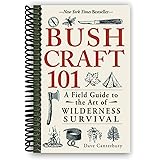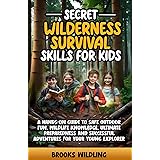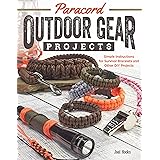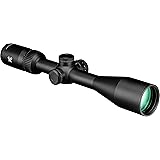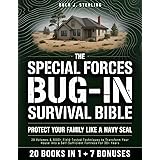The Essential Survival Medicine Guide: Navigating Health in Any Emergency
In today’s unpredictable world, the need for robust emergency preparedness has become undeniably clear. From unexpected power outages and severe weather events, as frequently experienced in regions like Florida, to broader societal disruptions, situations can arise where access to conventional medical care becomes severely limited or even impossible. It is in these critical moments that a comprehensive survival medicine guide transforms from a mere recommendation into an indispensable asset. While professional medical expertise cannot be replicated by every individual, acquiring foundational knowledge in emergency health management is a proactive step toward self-reliance and community safety.
As highlighted in the accompanying video, the reality is that one does not need to be a doctor to possess the vital skills required for basic medical care during a crisis. Instead, understanding how to address common ailments and injuries at a fundamental level ensures that critical situations are not exacerbated by a lack of knowledge. This proactive approach to health preparedness is not about replacing emergency services but rather about bridging the gap when those services are temporarily unavailable. Therefore, equipping oneself with accessible, practical medical information is considered a cornerstone of any truly effective disaster readiness plan.
1. Why a Survival Medicine Guide is Indispensable for Modern Living
The contemporary global landscape is often characterized by its inherent uncertainties. Natural disasters, ranging from hurricanes and floods to wildfires and earthquakes, frequently disrupt daily life and infrastructure. Beyond these environmental threats, localized emergencies such as extended power outages, civil unrest, or even isolated accidents can suddenly sever access to hospitals, pharmacies, and trained medical personnel. In these scenarios, a robust emergency medical preparedness plan, anchored by a reliable survival medicine guide, becomes critically important.
Without such resources, individuals and families may find themselves vulnerable, ill-equipped to handle even minor injuries or chronic conditions when professional help is out of reach. The objective is not to become a medical professional overnight, but rather to gain the confidence and competence to manage common health issues effectively until professional care can be resumed. This shift towards self-reliance in health is increasingly viewed as a crucial component of overall personal and family resilience.
2. Understanding the Scope of Emergency Medical Preparedness
A truly effective survival medicine guide covers an expansive array of potential medical challenges that might be encountered during a disaster or crisis. It is understood that these guides are designed to be practical resources for non-medical professionals, focusing on actionable steps rather than complex diagnostics. The breadth of topics typically addressed ensures that a wide spectrum of scenarios can be competently managed. One often finds that these guides begin with fundamental principles of sanitation and hygiene, which are paramount in preventing illness during extended periods without modern amenities.
Furthermore, attention is given to the proper storage and administration of essential medicines, particularly for those with chronic conditions that necessitate ongoing treatment. This preparation extends to understanding how to ration supplies and make informed decisions about medication usage when resources are scarce. The ability to manage both acute injuries and ongoing health concerns is a hallmark of comprehensive preparedness. It is widely acknowledged that anticipating these varied needs is a key to mitigating potential suffering during an emergency.
3. Key Areas Covered in a Comprehensive Survival Medicine Guide
Many valuable insights can be gleaned from a well-structured survival medicine guide, covering a broad spectrum of medical concerns. The goal is to provide enough information to recognize a problem and initiate appropriate, safe first aid. Specific examples frequently discussed often include:
-
Basic First Aid & Common Ailments:
This foundational section typically details the treatment of common issues. For instance, nosebleeds, while often minor, can be alarming; knowing how to properly stop one can prevent unnecessary panic and blood loss. Similarly, identifying and treating skin irritations like poison ivy or insect bites is essential for comfort and preventing infection. Guidance on managing fever, headaches, and minor cuts or abrasions is also routinely provided, reinforcing the importance of basic wound care to prevent more serious complications.
-
Recognition of Serious Conditions:
While definitive diagnosis is beyond the scope of a layperson, understanding the warning signs of severe medical emergencies is critical. The video mentions chest pain, for example. A comprehensive guide would not suggest self-treating a heart attack but would instead emphasize recognizing symptoms that necessitate immediate, professional medical attention if available, or how to keep the patient as comfortable as possible while awaiting help in a crisis scenario. This distinction between treatment and recognition is pivotal.
-
Outdoor and Environmental Hazards:
Given that many emergencies occur or lead to extended periods outdoors, addressing environmental dangers is a core component. In Florida, for instance, snake bites are a legitimate concern; a good guide provides crucial information on what to do (and what not to do) immediately after a bite. Likewise, common mishaps like getting a fishhook stuck in a finger, as surprisingly many anglers experience, are addressed with practical, safe removal techniques that can prevent infection and further injury when medical facilities are distant.
-
Infection Prevention and Hygiene:
A cornerstone of survival medicine is preventing illness from spreading, especially in environments where sanitation may be compromised. Guides typically offer advice on water purification, proper waste disposal, and hand hygiene to minimize the risk of bacterial and viral infections, which can quickly become epidemics in disaster zones.
4. Building Your Own Basic Emergency Medical Kit
A survival medicine guide is most effective when paired with a thoughtfully assembled emergency medical kit. This kit should be tailored to the specific needs of your household, considering any chronic conditions, allergies, or unique environmental risks in your area. Typically, such a kit would include:
- Wound Care Supplies: Sterile bandages, gauze, antiseptic wipes, medical tape, and a pair of trauma shears.
- Pain and Allergy Relief: Over-the-counter pain relievers, antihistamines, and any prescription medications stored with appropriate rotation.
- Essential Tools: Tweezers, a thermometer, safety pins, and potentially a multi-tool.
- Personal Protective Equipment: Gloves, face masks, and hand sanitizer.
- Specific Treatments: Anti-diarrhea medication, anti-nausea medication, and any specialized items like EpiPens or insulin if needed by family members.
- Reference Material: Crucially, a compact, durable version of your chosen survival medicine guide should be included.
It is generally advised that these kits be stored in an accessible, waterproof container and regularly inventoried to ensure all items are current and in good condition.
5. Beyond the Basics: Embracing Self-Reliance in Health
The pursuit of knowledge in emergency medicine extends beyond simply having a book; it is about cultivating a mindset of self-reliance. This involves not only reading the guide but also practicing basic skills, participating in first aid courses, and understanding the unique risks of your local environment. For example, knowing the types of venomous snakes common in your area, or understanding evacuation routes during hurricane season, are extensions of your medical preparedness strategy.
The ultimate goal of engaging with a comprehensive survival medicine guide is to feel empowered, rather than helpless, when faced with unforeseen circumstances. It allows individuals to take meaningful action for themselves and their loved ones, providing a critical layer of safety when conventional support systems are strained. This readiness is not just about surviving; it is about maintaining health and dignity through adversity, affirming that informed action can make a profound difference in a crisis.


